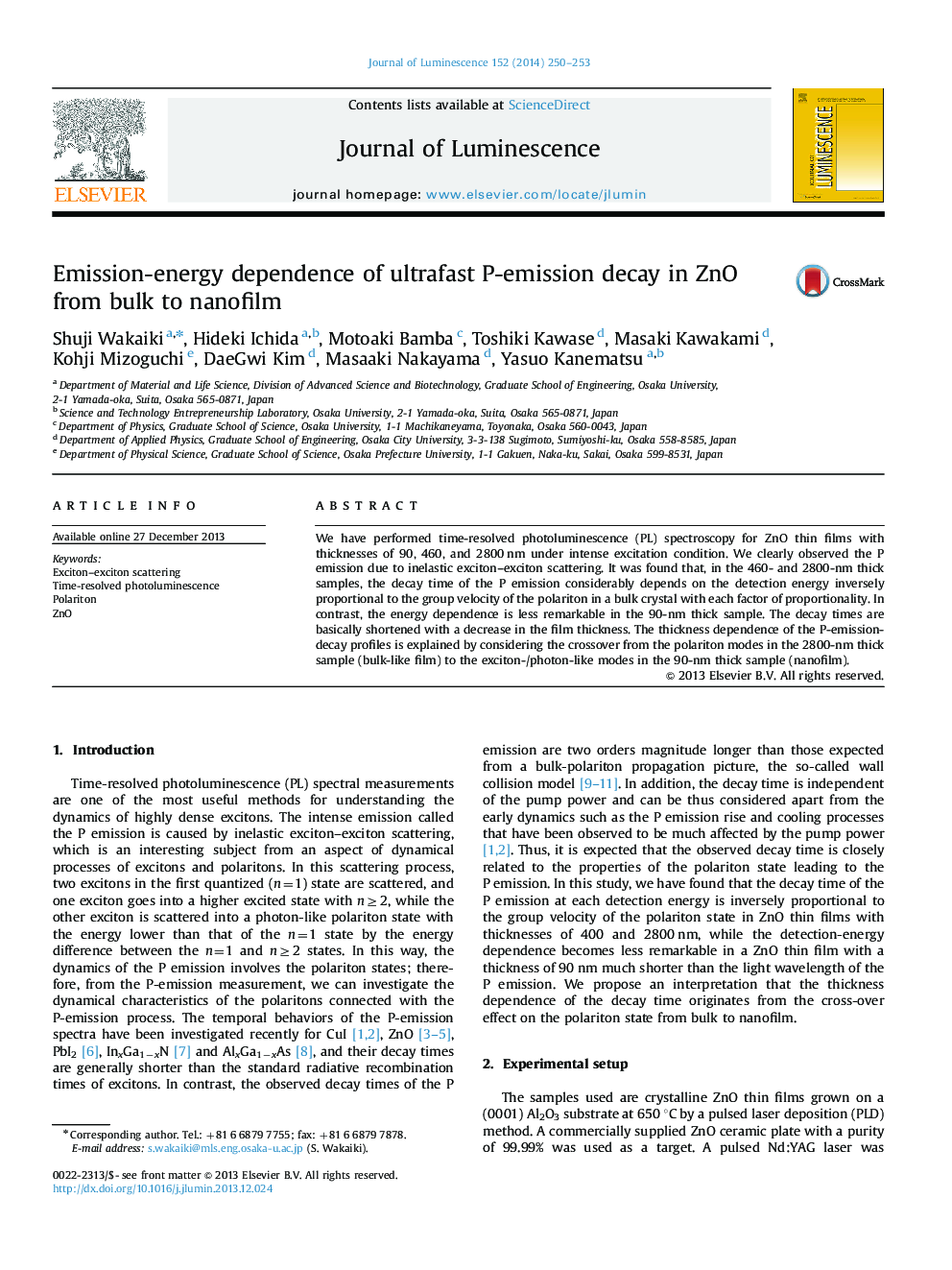| Article ID | Journal | Published Year | Pages | File Type |
|---|---|---|---|---|
| 5399593 | Journal of Luminescence | 2014 | 4 Pages |
Abstract
We have performed time-resolved photoluminescence (PL) spectroscopy for ZnO thin films with thicknesses of 90, 460, and 2800Â nm under intense excitation condition. We clearly observed the P emission due to inelastic exciton-exciton scattering. It was found that, in the 460- and 2800-nm thick samples, the decay time of the P emission considerably depends on the detection energy inversely proportional to the group velocity of the polariton in a bulk crystal with each factor of proportionality. In contrast, the energy dependence is less remarkable in the 90-nm thick sample. The decay times are basically shortened with a decrease in the film thickness. The thickness dependence of the P-emission-decay profiles is explained by considering the crossover from the polariton modes in the 2800-nm thick sample (bulk-like film) to the exciton-/photon-like modes in the 90-nm thick sample (nanofilm).
Related Topics
Physical Sciences and Engineering
Chemistry
Physical and Theoretical Chemistry
Authors
Shuji Wakaiki, Hideki Ichida, Motoaki Bamba, Toshiki Kawase, Masaki Kawakami, Kohji Mizoguchi, DaeGwi Kim, Masaaki Nakayama, Yasuo Kanematsu,
